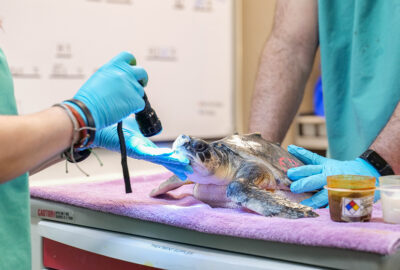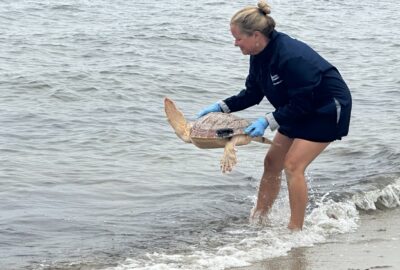Tracking Loggerhead Sea Turtles with Acoustic Telemetry
By New England Aquarium on Thursday, February 23, 2023

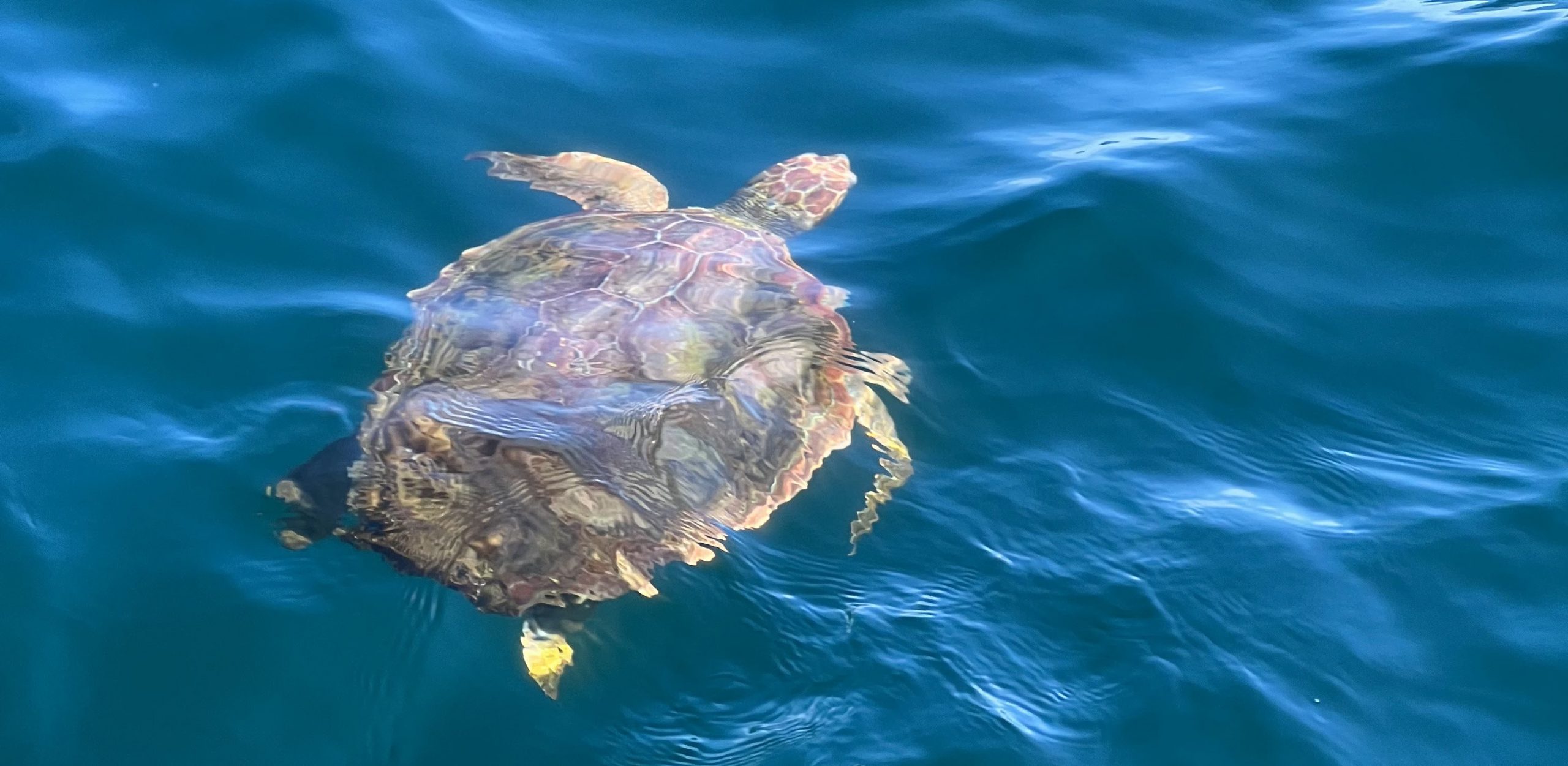
Editor’s note: The data in this story is current as of February 2023. New data collected in the study after that date is not reflected.
Patience is a virtue! Our sea turtle researchers have been putting that adage to good use as we begin to see results from our acoustic telemetry research. In 2021 and 2022, New England Aquarium researchers surgically implanted acoustic tags in loggerhead sea turtles for the very first time. Our goal is to understand the survivorship of rehabilitated sea turtles in the wild over multiple years. But it takes time, patience, and a village of researchers to get results! Find out more about this new project in the Q&A below.
What is acoustic telemetry?
The word telemetry is derived from the Greek roots tele (“remote”) and metron (“measure”), and acoustic relates to sound. Together, acoustic telemetry refers to the distant collection of measurements, or information, using sound. An acoustic telemetry system consists of transmitters and receivers. Animals are equipped with a transmitter that sends a unique “ping,” which can be heard by receivers within range that are listening for the tags. You can think of this system as an ocean EZ-Pass. Researchers studying marine animals, such as fish or sea turtles, use acoustic telemetry to collect data about their survival and movements.
How many turtles were given implanted acoustic tags?
We have tagged fourteen loggerhead sea turtles as part of this study. The first four were tagged in 2021, and we tagged an additional 10 loggerheads in 2022. All turtles were released during the summer into Nantucket Sound, where New England Aquarium maintains an extensive array of acoustic receivers to listen for tagged animals, including fish, sharks, and sea turtles. Basically, whoever swims by with a tag!
How many of the turtles have been detected by receivers so far?
We have detections from almost 80% of the tagged turtles! We’ve heard from 11 out of the 14 loggerheads as of December 2022. Turtles must swim near receivers in order for their tags to be heard, but the ocean is a big place and there are a limited number of acoustic receivers out there. So, having detections from so many turtles already is a fantastic result.
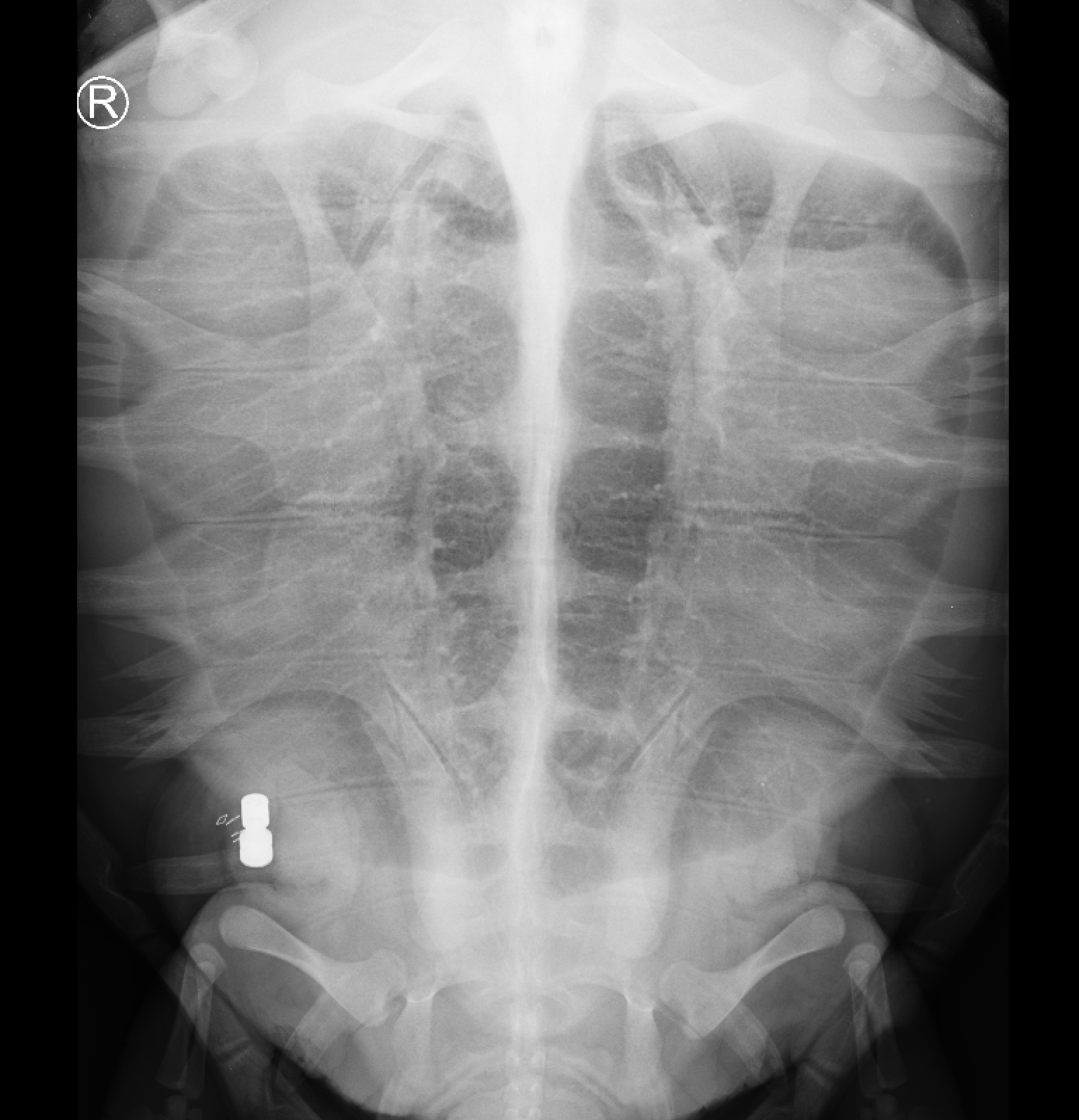
What is the longest tracking duration?
Our longest tracking duration, so far, has been loggerhead sea turtle “Peanut.” Peanut was released in early August 2021, and our most recent detection from Peanut was in September 2022. That’s over a year of monitoring! Peanut also really moved around after being released and was heard on receivers off Nantucket, Rhode Island, and New York.
Where are the turtles going after they’re released?
Our loggerhead detections have come from as far away as North Carolina and as close as Nantucket Sound, where we release our rehabilitated turtles. We’ve found that many of the tagged loggerheads remain in Nantucket Sound throughout the summer and early fall, presumably to forage on the local abundance of shellfish and crabs. Some turtles visited Nantucket, while others were detected off Block Island and in coastal waters off Rhode Island and New York. The data we’ve collected is consistent with what we have learned about loggerhead turtle movement patterns from satellite tags.
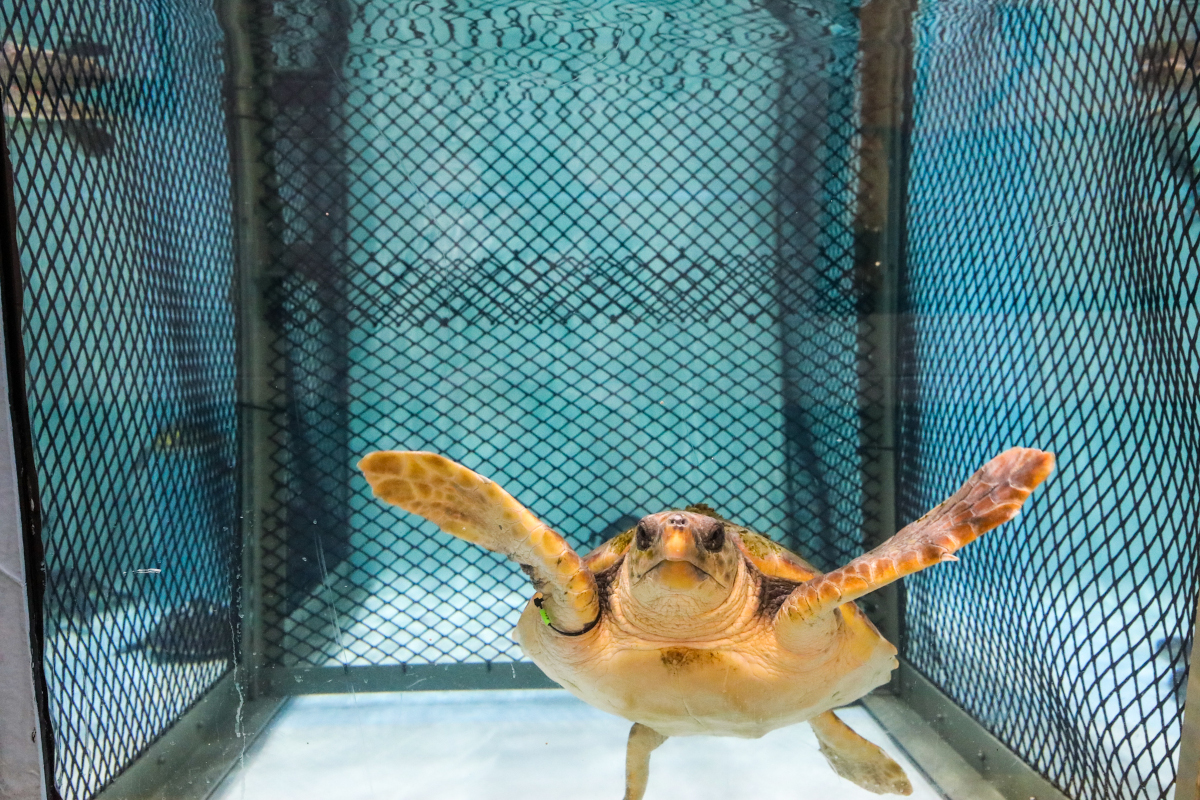
What is the data telling you?
At this early stage, the data are telling us that rehabilitated loggerheads can survive, at least short-term, after being re-introduced to the wild. We also have some information on sea turtle residency in Nantucket Sound and turtle movements during their migrations to warmer winter habitats. The types of acoustic tags we use can provide data for three to seven-plus years, so it will take time for us to accumulate multi-year data on turtle survivorship and movements, which is our ultimate goal!
Why is this research important?
Tagging research has told us a lot about sea turtles and how they use their ocean home, but it’s been challenging to keep tags attached to a turtle’s shell for more than a year. This is especially true for the turtles we rehabilitate at New England Aquarium, which tend to be young, fast-growing sea turtles that often shed their tags quickly. We learn a great deal from satellite tagging, but we wanted to have another tool in our toolbox that could provide long-term monitoring data at a lower cost than satellite tags. Implanted acoustic tags can last for years and have been successfully used in long-term studies of fish and sharks—some projects have collected data on individual animals for 10 years! We are hoping for similar success with sea turtles.

